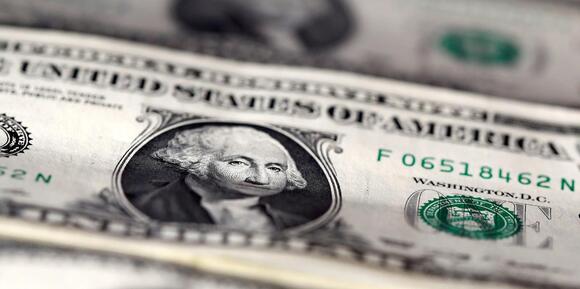
U.S. dollar notes are seen in this picture illustration
Reuters
- Global wealth shrank last year for the first time since 2008, a new UBS study showed.
- That's thanks to a trifecta of inflation, rising interest rates, and currency depreciation against the US dollar.
- Total global household wealth dropped last year by 2.4%, or $11.3 trillion, to $454.4 trillion.
A trifecta of inflation, rising interest rates, and currency depreciation squeezed global wealth last year for the first time since 2008, a UBS study showed.
By the end of 2022, total global household wealth dropped by 2.4% or $11.3 trillion to $454.4 trillion. Meanwhile, average individual wealth also slumped by 3.6% or $3,198 last year.
"Wealth evolution proved resilient during the COVID-19 era and grew at a record pace during 2021. But inflation, rising interest rates and currency depreciation caused a reversal in 2022," UBS analysts wrote in a note.
"While this outcome represents a break in the almost uninterrupted expansion of household wealth this century, it is less of a departure than it may appear at first sight. Further examination reveals that wealth losses are heavily concentrated among the richer nations in Europe, North America and Asia-Pacific, and affect financial assets much more than non-financial assets," they added.
Household wealth got a boost over the past few years as COVID-19 relief packages and low interest rates increased income for consumers. But following Russia's war with Ukraine, global inflation levels surged. That's sparked an aggressive policy reaction from central banks, which have hiked interest rates sharply over the past year.
The Federal Reserve has jacked up benchmark borrowing costs to level above 5%, from near-zero levels in early 2022, in a bid to cool historically high US inflation.
Higher inflation and interest rates tend to chip away at consumer spending power, eating away at individual savings and wealth.
According to UBS, local currency depreciation against the greenback also played a big role in eroding global wealth. The US dollar has largely strengthened since the Fed began hiking rates, making imports more expensive for other countries, and weighing on spending power.
Read the original article on Business Insider
No comments:
Post a Comment